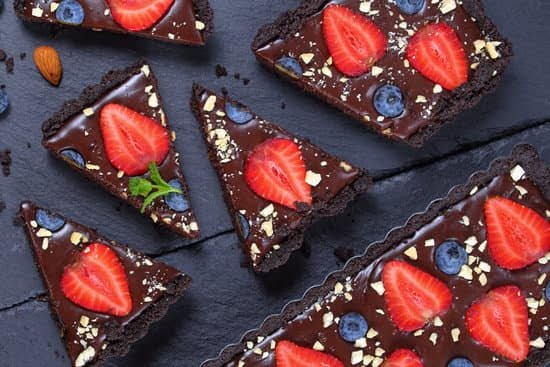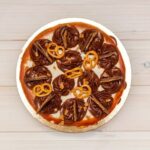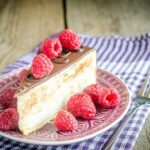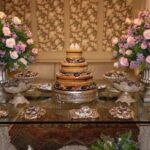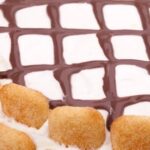Are you looking to take your cake decorating skills to the next level? If so, learning how to make blood for cake decorating is a must-have skill. Creating realistic blood can add an element of surprise and intrigue to your cakes, making them perfect for Halloween parties, horror-themed events, or any occasion that calls for a spooky and dramatic touch.
The key to achieving a truly authentic blood effect lies in using the right ingredients and techniques. In this tutorial, we will walk you through the process of creating lifelike blood for cake decorating, from choosing the right consistency to adding depth and dimension, and finally applying it to the cake in a way that looks realistic and enhances the overall design.
By following this step-by-step guide, you’ll be able to create a jaw-dropping blood effect that will impress your guests and take your cake decorating skills to new heights. Let’s dive into the world of realistic blood for cake decorating and elevate your creations to a whole new level of artistry.
Ingredients and Tools Needed
When it comes to creating realistic blood for cake decorating, having the right ingredients and tools is essential. To achieve the perfect blood effect, you will need a few key items, including food coloring, corn syrup, and various utensils. Let’s take a closer look at each of these components and their specific role in creating the desired blood effect.
First and foremost, food coloring is the primary ingredient for achieving the realistic red color of blood. It’s important to choose a high-quality food coloring that will produce a vibrant and natural-looking hue. Red and black food coloring are usually the main colors used for creating blood, but adding small amounts of blue or green can help create depth and dimension.
Next, corn syrup plays a crucial role in achieving the perfect consistency for the blood. Its thick and sticky nature mimics the texture of real blood, making it an ideal base for creating edible artificial blood. When combined with food coloring, corn syrup produces a glossy and lifelike finish that enhances the overall appearance of the cake.
In addition to these key ingredients, there are various utensils that are essential for creating realistic blood effects. Mixing bowls, spoons, paintbrushes or piping bags are just some of the tools that may be required to achieve different textures and application methods. When used in combination with the right ingredients, these utensils can help you create convincing coagulated or dripping blood effects on your cake.
| Ingredient/Tool | Description |
|---|---|
| Food Coloring | Main ingredient for achieving realistic red color; high-quality selection is important |
| Corn Syrup | Produces thick and sticky texture similar to real blood when combined with food coloring; creates a glossy finish |
| Various Utensils | Mixing bowls, spoons, paintbrushes or piping bags are necessary for different textures and application methods |
Choosing the Right Consistency
Blood for cake decorating requires the right texture to achieve a realistic and appealing look. Achieving the perfect consistency is crucial in creating the desired effect, and there are several key factors to consider when working with blood for cake decorating.
First and foremost, it’s essential to gather all the necessary ingredients and tools before starting the process. To make blood for cake decorating, you will need food coloring, corn syrup, mixing bowls, measuring spoons, and a whisk or spoon for stirring. Ensuring that you have all these items on hand will make the process of achieving the right consistency much easier.
Once you have all your ingredients and tools ready, it’s time to focus on finding the perfect texture for your blood effect. Start by mixing your food coloring and corn syrup in a bowl. The ratio of food coloring to corn syrup will depend on the specific shade of blood you’re trying to achieve, so be sure to experiment with different amounts until you reach your desired color.
In addition to getting the right color, it’s important to consider the thickness of the blood mixture. This can be adjusted by adding more or less corn syrup until you achieve the desired consistency. For a thicker blood effect, use less corn syrup; for a thinner consistency, add more corn syrup until you reach the desired texture. Experimenting with different ratios will allow you to find the ideal consistency for your cake decorating needs.
Creating the Base
Once you have gathered your ingredients and tools, it’s time to mix them together to create the base for the blood effect. Start by pouring a generous amount of corn syrup into your mixing bowl – this will serve as the primary substance to achieve the right consistency for the blood. Next, add several drops of red food coloring to the corn syrup, using more or less depending on how deep you want the color to be.
For added dimension, a few drops of black food coloring can also be incorporated at this stage. Use a spatula or spoon to thoroughly mix the corn syrup and food coloring until they are fully combined.
After mixing, assess the color and texture of your base mixture. The shade can be adjusted by adding more food coloring as needed until you achieve the desired color of blood for your cake decorating project.
It’s important to keep in mind that different shades may be required for various applications – arterial blood might appear brighter red while venous or older blood could lean towards darker shades with hints of brown or purple. Once you’re satisfied with the color, set aside this base mixture as you prepare to add depth and dimension before applying it to your cake.
As you work through these steps in creating your base for the blood effect, keep in mind that different consistencies and colors of “blood” can evoke different moods or effects within a design. With care taken at each stage from choosing ingredients through perfecting technique will result in a final decorative touch that looks both appealingly macabre – and – doesn’t actually freak anyone out.
Adding Depth and Dimension
Creating a realistic blood effect for cake decorating goes beyond just achieving the right color and consistency. Adding depth and dimension to the blood can take your cake design to the next level, creating a truly impactful and memorable result. In this section, we will explore some tips on how to add depth to the blood by incorporating additional colors and using different application methods to make it look more realistic.
Incorporating Additional Colors
To make the blood effect look more realistic, consider incorporating additional colors to create depth and dimension. This can be done by adding small amounts of black or deep red food coloring to the base mixture of corn syrup and red food coloring. By gradually blending in these additional colors, you can create a more natural-looking blood effect that mimics the varying shades found in real blood.
Using Different Application Methods
In addition to adjusting the color, using different application methods can also enhance the realism of the blood effect. Consider using a paintbrush or sponge to dab on layers of the colored corn syrup mixture, creating patches of darker and lighter areas to simulate coagulated blood. You can also experiment with dripping or splattering techniques to mimic spatter patterns often seen in bloodstains.
Creating Realistic Impacts
To further enhance the realism of the blood effect, consider adding special effects like edible glossy varnish or edible glitters onto bullet hole wounds or cut wounds for added sheen and texture. With these techniques, you can create a truly convincing illusion of fresh or dried-up blood depending on your desired cake design theme.
By incorporating these tips into your cake decorating process, you can achieve a stunningly realistic blood effect that truly captures attention and leaves a lasting impression.
Texture Techniques
When it comes to creating a realistic blood effect for cake decorating, adding texture is essential in achieving a lifelike appearance. There are various techniques that you can use to add texture to the blood, making it look coagulated and authentic. Here are some methods you can explore to achieve the perfect texture for your cake decoration:
- Use a toothpick or small brush to create thin lines or streaks in the blood to mimic the appearance of clotted blood.
- Sprinkle edible materials such as crushed cookies or nuts onto the blood to give it a gritty and lumpy texture, resembling coagulated blood.
- Dip a straw or syringe into the prepared blood mixture and gently blow air onto the surface of the cake to create splatter effects, simulating a fresh blood spatter.
It’s important to experiment with different textures and techniques to find what works best for your specific cake design. The key is to achieve a balance between realism and appeal while ensuring that the texture complements the overall look of the cake.
Ultimately, by incorporating these texture techniques into your cake decorating process, you can elevate the visual impact of your creation and create a stunningly realistic blood effect that will impress your guests. Remember to practice these methods and be open to exploring new ideas to achieve the perfect texture for your cake decoration.
Application to the Cake
Adding realistic blood to a cake can truly elevate its design, creating a striking and impactful effect. Once you have created your blood mixture using the right ingredients and achieved the perfect consistency, the next step is learning how to apply it to the cake in a way that looks authentic and enhances the overall aesthetic.
Whether you’re going for a spooky Halloween theme or a gory and dramatic look, mastering the application of blood to a cake is crucial.
When applying the blood to the cake, consider where and how you want it to appear. For example, if you are aiming for a dripping effect on the sides of the cake, use a small spoon or squeeze bottle to carefully pour or drizzle the blood down from the top edge. This will create a natural dripping effect that will make your cake look eerily realistic.
If you want more precise placement of the blood, such as handprints or splatter patterns, consider using small paintbrushes or toothpicks to create intricate details. You can also use stencils to achieve specific shapes or designs with the blood. Regardless of your chosen method, use caution and precision when applying the blood to avoid any unintentional smudges or spills on your beautifully decorated cake.
In addition, be mindful of where you place the blood on your cake. Concentrate on areas that will enhance the overall design and theme without overpowering other decorative elements. The key is to strike a balance between achieving a realistic bloody effect and maintaining an aesthetically pleasing appearance for your final creation.
| Technique | Equipment Needed |
|---|---|
| Dripping Effect | Small Spoon or Squeeze Bottle |
| Precise Details | Small Paintbrushes or Toothpicks |
| Stencil Application | Stencils |
Final Touches and Precautions
In conclusion, creating realistic blood for cake decorating is an essential skill for achieving a spooky and impressive design. By following the steps outlined in this tutorial, you can achieve a lifelike blood effect that will surely impress your friends and family at any Halloween or horror-themed event. With the right ingredients, tools, and techniques, you can create a cake that looks like it came straight out of a horror movie.
When making blood for cake decorating, it is crucial to pay attention to the consistency and texture of the mixture. By carefully choosing the right proportions of food coloring and corn syrup, as well as experimenting with different application methods, you can achieve a realistic look that will make your cake stand out. Additionally, adding depth and dimension to the blood with additional colors and textures will enhance the overall effect.
Before applying the blood to your cake, it’s important to consider final touches and precautions to ensure both safety and visual appeal. You can add texture to the blood by using various utensils or edible materials to create a coagulated effect.
It’s also important to note that while creating a gory or gruesome design can be fun, it’s essential to consider your audience and any potential sensitivities they may have towards graphic imagery. By following these final tips and taking necessary precautions, you can create a stunning cake that is both visually striking and safe for everyone to enjoy.
Frequently Asked Questions
How Do You Make Fake Blood for Decorations?
Fake blood for decorations can be made using simple household ingredients like corn syrup, red food coloring, and cocoa powder to give it a realistic look. Mix them together until you achieve the desired consistency and color.
Is All Fake Blood Edible?
Not all fake blood is edible. Some fake blood recipes contain non-edible substances like paint or chemicals that should not be ingested. If you want edible fake blood, use food-grade ingredients like corn syrup and food coloring.
How Do You Make Fake Blood With Glue?
Fake blood with glue can be made by mixing white glue with red and blue food coloring to achieve a deep red hue. Adjust the amount of each color to get the desired shade of fake blood. The glue will help thicken the mixture for a more realistic look.

Welcome to our cake decorating blog! My name is Destiny Flores, and I am the proud owner of a cake decorating business named Cake Karma. Our mission is to provide delicious, beautiful cakes for all occasions. We specialize in creating custom cakes that are tailored specifically to each customer’s individual needs and tastes.

